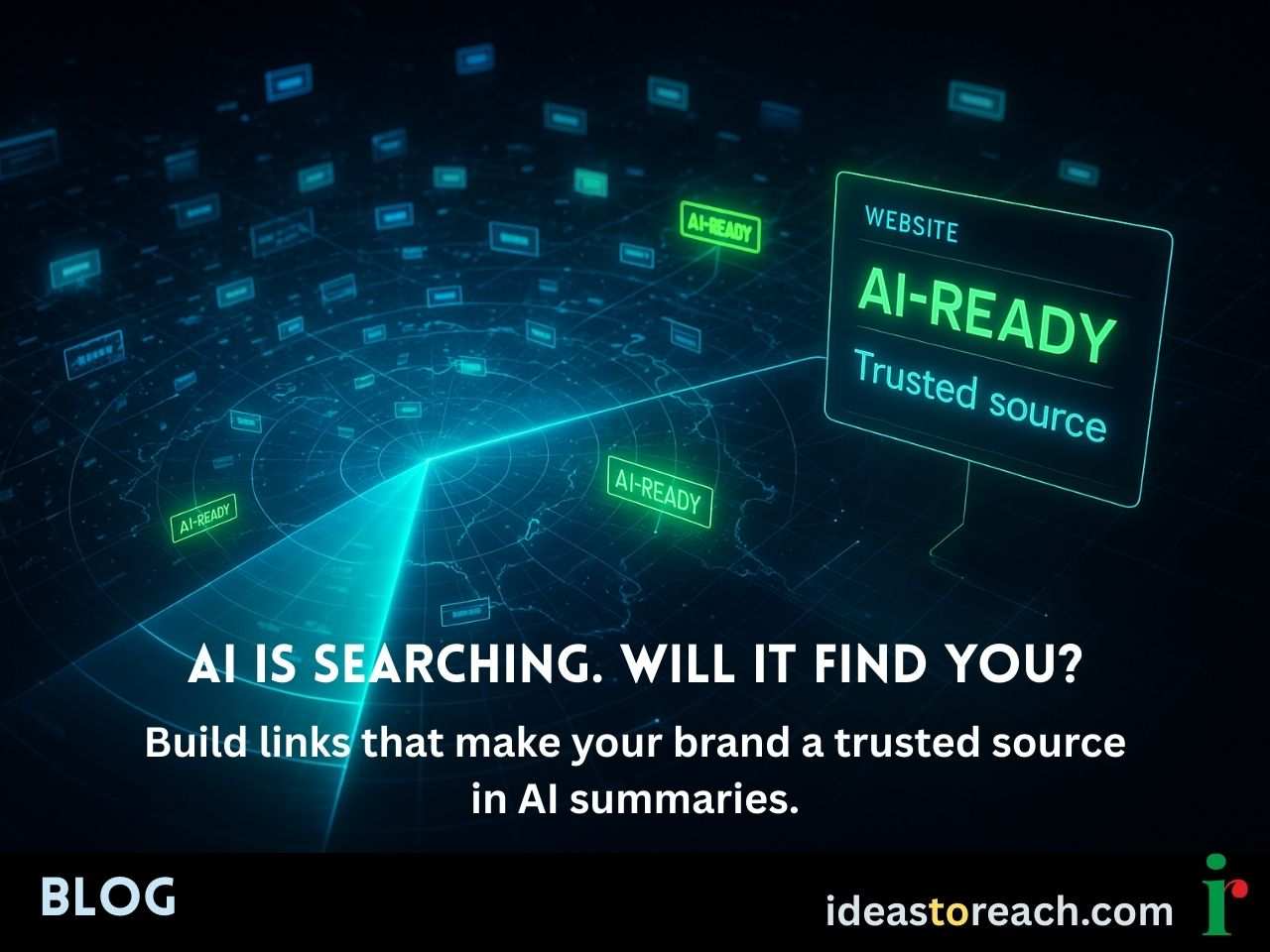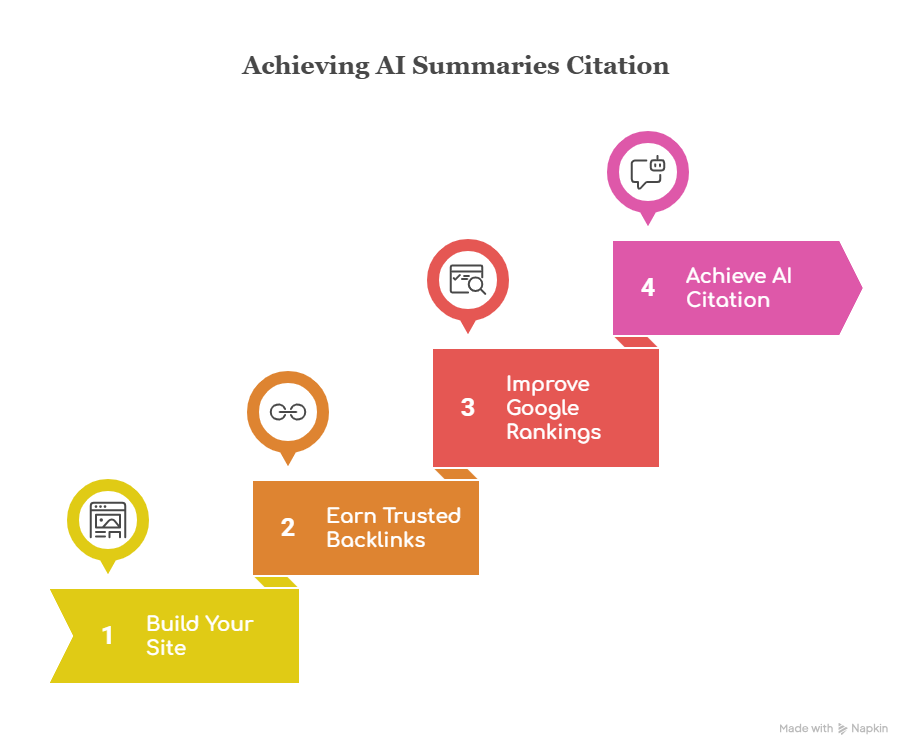
Link building has always been at the heart of SEO. But in 2025, links aren’t just about ranking on Google, they’re also crucial for visibility inside AI answers, from ChatGPT to Perplexity to Google’s AI Overviews.
If you want to dive deeper into this, read our guide on How to Rank on Google AI Overviews & AI Search.
When these AI tools create summaries, they rely on training data and live sources. And what makes a source trustworthy? Strong, evergreen, and authoritative links.
In this guide, we’ll break down everything you need to know about building links that AI cannot ignore, including:
Back in the early days of Google, links were mostly about PageRank, the more quality sites that linked to you, the more trustworthy you looked. That logic still exists, but now AI tools are scanning the same signals when they decide what to include in answers.
Here’s why links play such a big role for AI summaries:
A Backlinko study analyzing over 11 million search results found that #1 ranked pages have 3.8× more backlinks than those in positions 2–10.
If you want to see how Google still measures authority signals, check out our guide on Domain Authority as the new digital reputation score.
Not every link has the same value. To stand out in both Google and AI ecosystems, you need backlinks with these qualities:
Links to resources that don’t expire.
Links from credible publishers, news outlets, and institutions.
Links placed inside relevant articles, not dumped in footers or sidebars.
AI prefers citing content that offers original surveys, case studies, or stats.
Pairing original research with Structured Data in SEO makes it even easier for AI systems to recognize and cite your content.
Here are actionable ways to start building links that get picked up by both search engines and AI summaries:
Publish original surveys, industry research, or city-specific insights. Journalists love unique data, and so do AI tools.
Pitch your insights to journalists via HARO, Qwoted, or direct outreach. One earned link in a national daily is worth dozens of weak backlinks.
Many websites maintain curated “best tools,” “top guides,” or “helpful links” sections. Earning a place on these evergreen pages ensures your content is consistently crawled, by both people and AI.
Long-form LinkedIn articles that gain traction often get cited externally, LinkedIn itself is widely crawled by AI systems.
Backlinks from regional platforms like community forums, local news sites, or association blogs carry strong credibility. For instance, in real estate, contributing to CREDAI blogs builds trust and visibility, the same principle applies in any industry when you partner with relevant local authorities.

A simple step-by-step roadmap to reach AI citation through strong backlinks and rankings.
When you build links that are evergreen, authoritative, and unique, you’re doing two things at once:
And here’s the real win: if your brand keeps showing up in AI summaries, you’re not just earning clicks, you’re shaping the conversation itself.
Search is no longer just about ten blue links on Google. The next big battleground is inside AI summaries, where entire audiences may form opinions without ever clicking a website. In this landscape, backlinks aren’t just “SEO fuel”, they’re the citations that decide whose voice gets amplified.
The brands that will win are the ones that treat link building as a long-term investment in authority: publishing insights others rely on, creating resources that never expire, and earning mentions from sources people already trust. Do this, and you won’t just rank higher, you’ll become the reference point that AI itself leans on.
Because in the AI era, it’s not enough to be found. You have to be quoted.
Not exactly. Google uses backlinks for ranking, while AI uses them as signals of credibility. But in both cases, high-quality links increase visibility.
Evergreen, authoritative, and data-rich links stand the test of time. Temporary news mentions or short-term campaigns fade quickly.
Not really. The same strategies, authoritative, contextual, evergreen links, work for both. The difference is in mindset: think long-term and citation-worthy.
Every 6–12 months. Regular audits keep your link profile strong and AI-friendly.